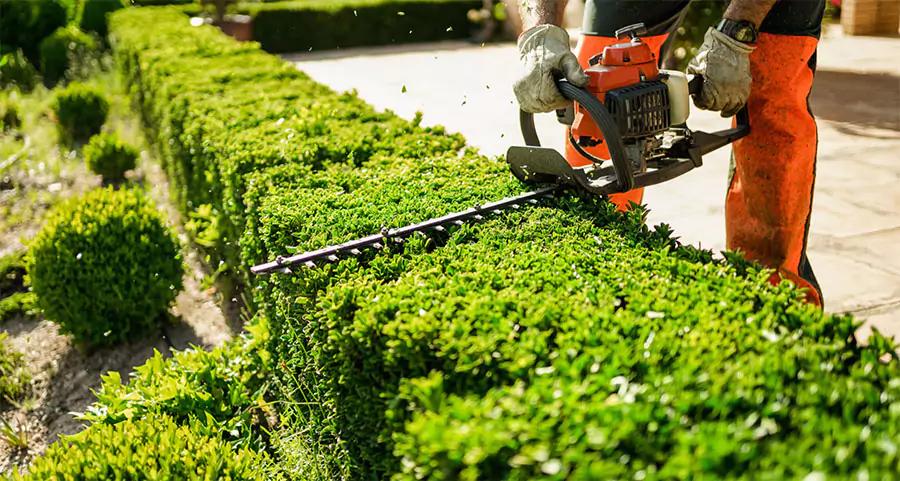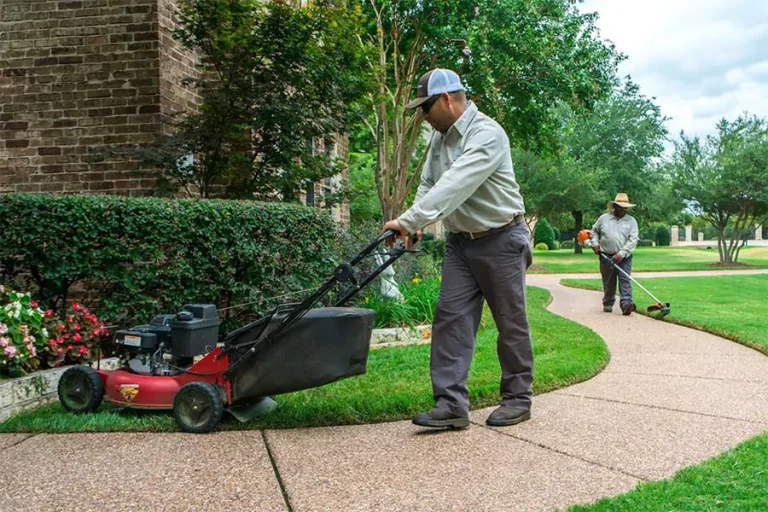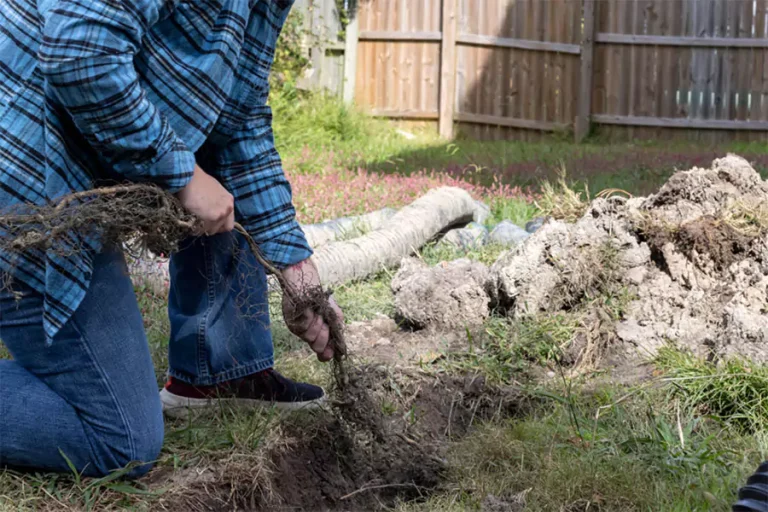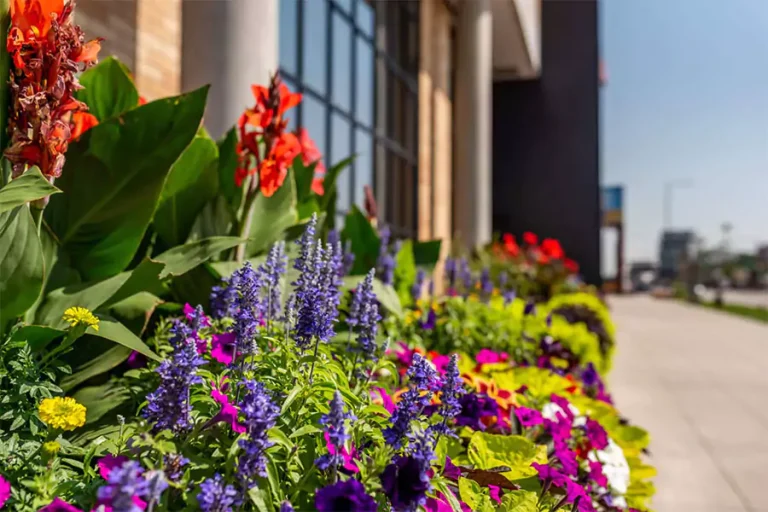Houston summers are hot, humid, and full of growth—especially in your yard. If your plants and shrubs seem to double in size overnight, you’re not alone. This wild burst of green needs regular care, or things can get out of hand fast.
That’s where a trusted landscape maintenance contractor in Houston makes a big difference. With professional attention and consistent upkeep, you can keep your yard looking polished all summer long, without the stress of tackling it yourself.
But how often should a landscape company trim plants and shrubs during the summer in the Houston, TX area? Let’s talk about what keeps your outdoor space neat, healthy, and easy on the eyes, without turning it into a jungle.
How Often Should Plants and Shrubs Be Trimmed?
Why Summer Brings Fast Growth
Warm temps and long days: Houston’s summer heat and sunlight act like a growth booster for plants. That means shrubs can grow wild in just a few weeks.
Moisture + heat combo: Add in sudden rain, and you’ve got the perfect mix for fast-growing plants, lawns, and everything in between.
General Trimming Schedule for Summer
For most Houston yards, trimming should be done every 4 to 6 weeks during summer. Some plants may need it more often, depending on how fast they grow and how neat you want things to look.
Fast growers like ligustrum or hollies: These may need trimming every 3-4 weeks.
Slow growers like boxwoods: These can go 6 weeks or more between trims.
Flowering shrubs: It depends on when they bloom. Trim after they flower to avoid cutting off future blooms.
What Happens If You Don’t Trim?
If you skip trimming, your yard can get messy fast, especially in the hot, humid Houston summer. Shrubs and plants will grow wild, blocking sunlight from reaching your lawn or smaller plants. That can lead to weak, patchy grass.
Overgrown spots also become perfect hiding places for bugs and even snakes. And if you own a business or manage a commercial property, messy plants can make your place look unprofessional.
Maintaining your landscape in such extreme conditions requires more than just a regular schedule—it’s about understanding how local weather patterns affect plant growth and health. In fact, the climate’s impact on seasonal landscaping plays a huge role in determining when and how trimming should be done for the best results.
What Types of Plants Need the Most Trimming?
Here are the plants that just can’t sit still— they grow fast, spread wide, and need more trimming than others, especially during a Houston summer.
- Fast-spreading shrubs – Like abelia or lantana, which grow fast and lose shape easily.
- Tropical plants – Banana plants, elephant ears, and similar plants love Houston heat but can grow wild if left alone.
- Ornamental grasses – Some need summer shaping, others should wait until winter—ask your landscaper!
- Vines – Think of things like jasmine or trumpet vine. These need regular trimming to stop them from taking over your walls or fences.
What Should Be Trimmed and When?
Breaking It Down by Plant Type:
Shrubs used for borders
These are the plants that line your walkways, fences, or property edges. They grow fast and can start blocking paths or views if you’re not careful. A good rule is to trim them every 4–5 weeks during summer to keep everything looking tidy and open. Many landscape services include regular shrub maintenance to make sure your yard stays neat without blocking walkways or sightlines.
Flowering shrubs like azaleas or hydrangeas
These pretty plants need a little extra care. If you trim them too early, you might cut off the blooms. The best time to trim is after they finish flowering, so they stay healthy and still give you flowers next season.
Turf edges
Grass around sidewalks, driveways, and flower beds can grow uneven and look messy fast. Keeping those edges neat with a weekly or bi-weekly trim helps your whole yard look clean and cared for. Plus, it makes mowing easier, too!
Trees and larger plants
You don’t always need to trim big trees in the summer, but there’s still some work to do. Watch out for small branches, suckers (those little shoots that grow at the base), and anything broken or in the way. Cleaning those up helps your trees grow stronger and keeps things safe.
I used to think trimming was just about keeping things neat, so I’d only touch up the yard when it started looking overgrown. But over time, I noticed our flower beds weren’t blooming like they used to, the shrubs along the fence were blocking the walkway, and the edges around the driveway looked rough no matter how often I mowed. I finally called Pearce Scapes to take a look.
They walked me through what needed to be trimmed and when—from the azaleas that should only be cut after blooming to the turf edges that need weekly touch-ups to stay sharp. They even cleaned up some low-hanging tree branches and removed suckers that I hadn’t even noticed.
The difference was huge—our yard looks clean, the flowers came back strong the next season, and maintenance has been way easier since.
– Marta, Briar Forest Drive, Houston, TX
Can Trimming Help Plants Survive the Heat?
Yes—If Done Right
Trimming can help your plants survive the hot Houston summer. When plants are trimmed, they become thinner and use less water, which makes them easier to keep alive during dry weeks.
Cutting back also removes extra weight from branches, helping the plant stay strong, especially after those sudden summer storms. Trimming also improves airflow, which can stop mold and mildew from growing during those sticky, humid days.
How Does Trimming Fit Into Overall Landscape Maintenance?
It’s One Piece of the Outdoor Puzzle
Trimming works with mowing and irrigation: You can’t just focus on one thing. Everything in your outdoor space needs balance.
Helps with water management: Plants that are kept in shape don’t suck up more water than they need.
Supports healthy lighting: Whether you have outdoor lighting or not, keeping plants trimmed keeps spaces open and light moving where it needs to.
Does Commercial Landscaping Need More Frequent Trimming?
For Businesses, Looks Matter More
High-traffic areas tend to grow fast because they get more sun, more watering, and more wear and tear from people coming and going. That means trimming needs to happen more often to keep things looking sharp.
Regular trimming also keeps your commercial property safe by making sure shrubs don’t block sidewalks, doors, or parking lot views.
And since Houston weather doesn’t take a break, commercial and residential landscapes both need year-round care, with trimming being a big part of keeping everything neat and professional.
Conclusion
Summer in Houston, TX, is no joke—especially for plants. Between the sun, heat, and surprise rainstorms, your shrubs and outdoor space can turn into a wild mess before you know it. That’s why regular trimming, usually every 4 to 6 weeks, is such a big part of landscape maintenance.
Keeping plants in shape means better looks, healthier growth, and easier care for both homes and commercial properties. With so much going on outside, it helps to have a landscaper who knows Houston’s weather, soil, and plant life.
A local expert can offer essential tips for effective landscape maintenance and expert advice for a beautiful lawn, ensuring your outdoor space stays vibrant through every season, from intense summer heat to heavy rains.
Need help with trimming, design, or ongoing maintenance? Call Pearce Scapes today at (281) 370-5060! Our team handles everything from lawn care to irrigation to full landscape design and installation. Whether your outdoor space needs a small cleanup or a full overhaul, they’re ready to make it shine.
Frequently Asked Questions
1. Can trimming too often hurt plants in Houston’s summer?
Yes, trimming too often or too much can stress a plant, especially in high heat. That’s why knowing the right schedule for each plant matters.
2. What’s the difference between trimming and pruning?
Trimming usually means shaping for looks, while pruning focuses on health, like cutting off dead or diseased parts. Both are needed for full-service maintenance.
3. Do all plants need trimming every month?
Nope! Some grow slowly and only need occasional shaping, while others grow fast and need monthly or even bi-weekly trims in the summer.






